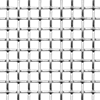Filter by
Shape
Thickness
Tolerance Rating
Appearance
Wall Thickness
Mechanical Finish
Specifications Met
Outside Width
Certificate Type
Heat Treatment
Outside Height
Hardness Rating
DFARS Specialty Metals
Hardness
Yield Strength
Raw Materials
Fastening and Joining
Fluid Handling
Power Transmission
Fabricating and Machining
Containers, Storage, and Furniture


































